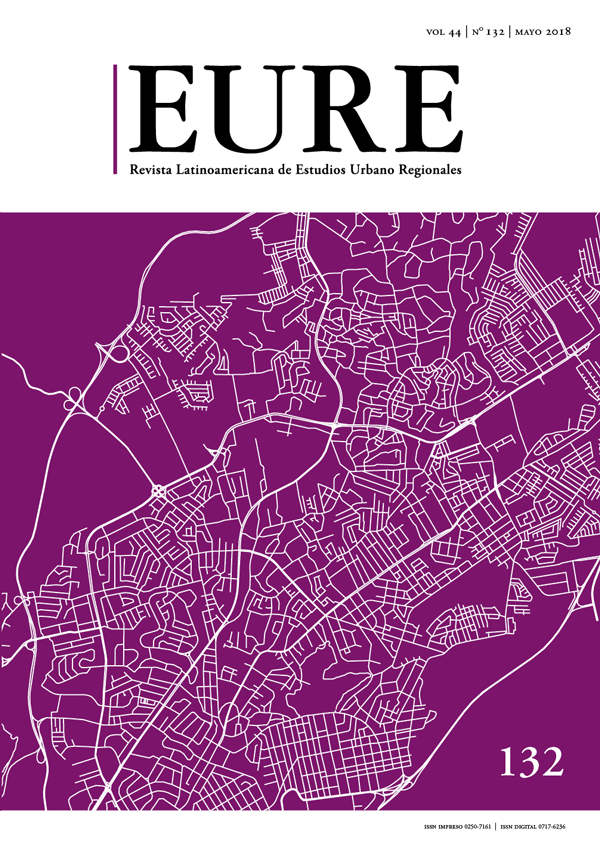Neoliberal Urbanism and Urban Fragmentation: The Case of Saragossa (Spain) in the First Fifteen years of the 21st century
DOI:
https://doi.org/10.4067/s0250-71612018000200185Keywords:
urban fragmentation, urban planning, urban peripheryAbstract
The growth of urban space of Zaragoza during the first fifteen years of the 21st century is characterized by its socio-spatial fragmentation at several scales, a significant feature of the neoliberal urbanism. The growth model of the city is composed of large monofunctional urban fragments attached to the existing urban space by the main traffic routes. These ways and other physical or perceived obstacles interrupt the continuity with the consolidated urban space, especially for the movement of people. Nevertheless, this pattern allows the connection of the new spaces with the local urban environment but, at the same time, promotes the social segregation and fosters a polycentric functional model based on travel by private car.
Downloads
Published
How to Cite
Issue
Section
License
Copyright (c) 2018 Revista EURE - Revista de Estudios Urbano Regionales

This work is licensed under a Creative Commons Attribution 4.0 International License.
Al momento de aceptar la publicación de sus artículos, los autores deberán formalizar la cesión de derechos de autor a EURE, según las condiciones establecidas por la Revista.
Ésta establece que el autor autoriza a EURE de manera gratuita, exclusiva e ilimitada a reproducir, editar, publicar, distribuir, publicitar, comercializar y traducir el artículo, a cualquier soporte conocido o por conocer y desarrollar.
Del mismo modo, los autores aseguran que el artículo propuesto es original, no publicado y no propuesto para tal fin a otro medio de difusión.


